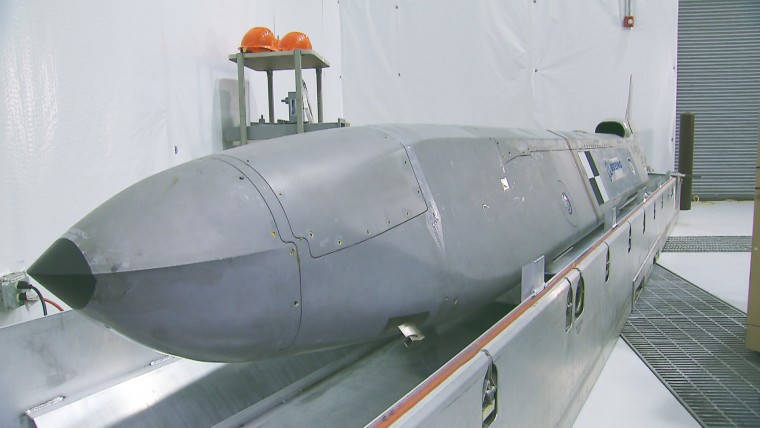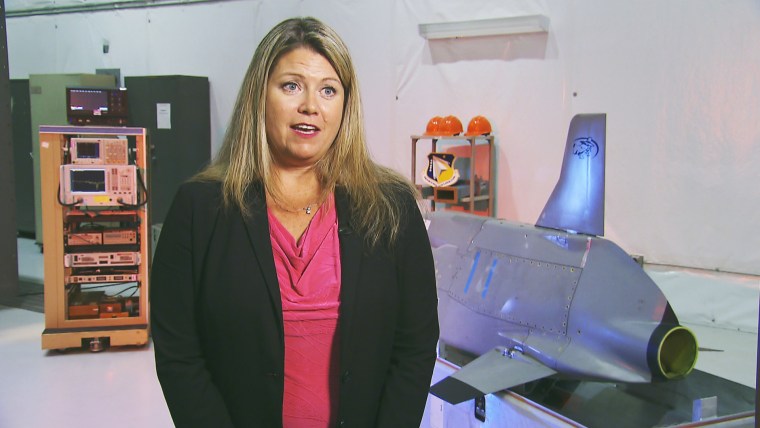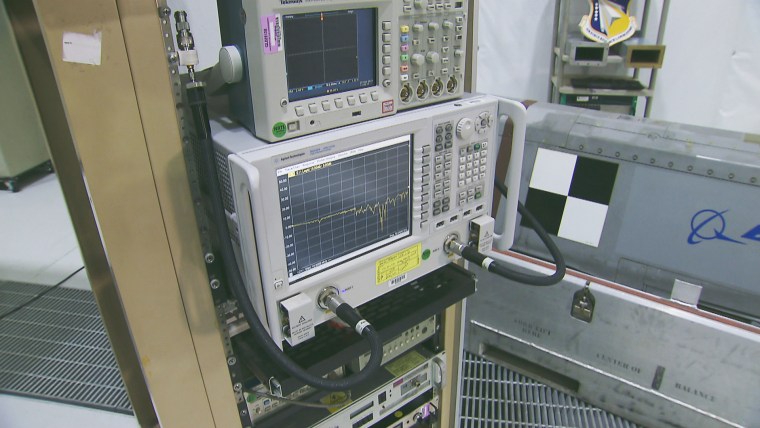The U.S. has microwave weapons that proponents believe could stop North Korea from launching missiles by frying their electronics.
The weapons were discussed at an August White House meeting related to North Korea, according to two U.S. officials with direct knowledge.
The microwave weapons, known as CHAMPs, are fitted into an air-launched cruise missile and delivered from B-52 bombers. With a range of 700 miles, they can fly into enemy airspace at low altitude and emit sharp pulses of microwave energy to disable electronic systems.
"These high-powered microwave signals are very effective at disrupting and possibly disabling electronic circuits," said Mary Lou Robinson, who heads development of the weapons at the Air Force Research Laboratory in Albuquerque, in an exclusive interview with NBC News.

Advocates say they could be used to stop North Korea from launching missiles by targeting the ground controls and the circuitry in the missiles themselves. The weapons are not currently operational.
How does a high-power microwave (HPM) weapon work?
"Think about when you put something in your microwave that has metal on it," said Sen. Martin Heinrich, D-N.M. "You know how badly that goes? Imagine directing those microwaves at someone's electronics."
Sen. Heinrich, a member of the Armed Services Committee, began his career as an engineer at the Air Force Research Laboratory in Albuquerque.
"Command and control centers are filled with electronic infrastructure which is highly vulnerable to high powered microwaves," said ret. Lt. Gen. David Deptula, who ran the air wars in Afghanistan and Iraq and retired as the head of Air Force intelligence.
The Air Force and other government agencies have been working on the weaponization of microwaves for over two decades. Various emitters have been employed on the ground — in Afghanistan and Iraq, they have been used to disable improvised explosive devices (IEDs) and small drones.
But turning a high-power microwave into a strategic weapon was slowed by the need to reduce the size and weight of the emitter and then match it with an onboard power source sufficient to drive the microwave pulses.
The Air Force Research Laboratory began work on CHAMP, which stands for Counter-electronics High Power Microwave Advanced Missile Project, in April 2009. The lab fitted the HPM emitter into a non-nuclear version of a Boeing-built air-launched cruise missile.

By October 2012, according to Air Force documents, CHAMP was ready for an operational test. A B-52 bomber launched the missile over the Utah Test and Training Range, a 2,500-square-mile testing area larger than Delaware. Mocked-up buildings were rigged with communications and computer systems that simulated possible enemy capabilities.
Many of the targets, according to internal CHAMP budget documents obtained by NBC News, involved "representative WMD production equipment" found in Iran and North Korea.
"It was as close to the real thing as we could get," Keith Coleman, CHAMP program manager for Boeing, said after the test.
"It absolutely did exactly what we thought it was going to do," said Robinson. "We had several different target classes in those facilities, and we predicted with almost 100 percent accuracy … which systems were going to be affected, which systems failed, and how."
The 2012 test, the only one so far declassified by the Pentagon, has been followed by additional tests and various experiments to advance the microwave technology. A new power source was incorporated, turning the microwave weapon into what the Air Force calls "Super CHAMP."
According to a December 2016 Air Force Research Laboratory document, the low-flying missile is now "capable of flying into a contested area and disabling an adversary's electronic systems."
Robinson said "there is no doubt" in her mind that HPM weapons work.
Could a high-power microwave weapon actually be used against North Korea?
Deptula said he believed the U.S. could use an HPM to disable a ballistic missile on a North Korean launch pad, and that there are many advantages to using microwave weapons in a North Korean scenario.
They work in all weather, said Deptula, which helps in the Korean climate, and "they're employed at the speed of light. You can't get much faster than that in terms of achieving desired effects."
The main operational constraint, Robinson said, is that the microwaves from the CHAMP emitter "aren't very far-ranging."

Robinson said that in order to disable a missile or launcher's electronics, CHAMP would have to get "close" to the target. How close is classified, but "it's not tens of feet," said Robinson.
Sen. Heinrich said the challenges to using the weapon are "less technical and more mental. You spend years trying to perfect these things, and the tendency in the Pentagon is oftentimes to continue to try to perfect something. My tendency is to say, 'Hey, we've got something that really works. Let's take those things and put them into the hands of our men and women in uniform.'"
Deptula adds that one of the differences in using microwaves as opposed to explosives is assessing the effects — the destruction they wreak is not visible.
But Deptula said that "there are means to determine whether or not you've achieved your effects beyond the traditional battle damage assessment using photography."
Speaking in February 2016, Air Combat Command chief Gen. Herbert "Hawk" Carlisle said that a number of high-power microwave units were being kept as "weapons to use in a contingency."
Robinson said that "it would take a little bit of time" to make the missiles operational. Two Air Force officials with knowledge of the current plans and capabilities say that CHAMP could be ready for use quickly, possibly within days.
The White House declined to comment.
